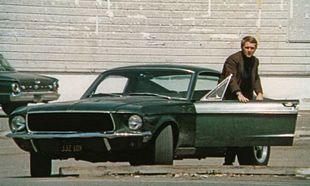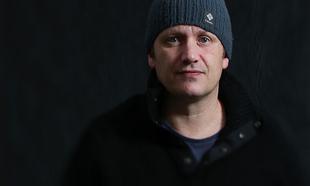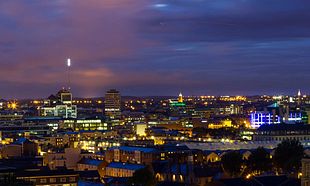
San Francisco
1936 Drama | Romance | MusicalThe MGM historical spectacular San Francisco was allegedly based on a three-sentence synopsis, submitted verbally to producer B.F. Zeidman by studio troubleshooter Bob Hopkins. The story begins on the Barbary Coast on New Year's Eve, 1906, as rakish but likeable political boss Blackie Norton (Clark Gable) hires demure young singer Mary Blake (Jeanette MacDonald) to perform at his rowdy Paradise gambling house. Local priest Father Mullin (Spencer Tracy), Blackie's best friend, disapproves of the exploitation of the lovely Mary, feeling that she's suited for classier surroundings. Jack Hurley (Jack Holt), Nob Hill socialite and Blackie's political rival, agrees with Father Mullin and offers the girl the opportunity to sing with the San Francisco Opera. Blackie, who's fallen in love with Mary but won't admit it to himself, jealously holds on to her contract, forcing Mary to walk out on him. For the rest of the film, Mary is torn between the respectable lifestyle offered her by Hurley and the baser creature comforts provided by Blackie. It looks for a while that Hurley has won out, but fate takes a hand in the form of the devastating San Francisco Earthquake of April 18, 1906 (a special effects tour de force for art directors Arnold Gillespie and his uncredited associate James Basevi). Hurley is killed in the holocaust, while Blackie, desperately searching for Mary in the rubble, at long last finds religion and prays to God for his sweetheart's salvation. At the end, an unidentified bit player shouts defiantly We'll build a new San Francisco! -- and by golly, they do! The Hollywood censors were not so much bothered by the sexual subtext of San Francisco or its harrowing earthquake finale as they were by a scene in which Father Mullin is knocked down by an unrepentant Blackie. To purify this potentially blasphemous sequence, screenwriter Anita Loos quickly added an earlier scene in which Mullin and Blackie, both dressed in turtleneck sweaters, genially duke it out at an exercise gym, whereupon the priest cold-cocks Blackie with the greatest of ease. By establishing that Mullin could have punched out Blackie, but chooses not to in the controversial later scene, not only allows that scene to pass, but also strengthened the priest's character. San Francisco proved to be one of MGM's biggest hits, remaining in almost constant reissue for the next three decades.~ Hal Erickson, All Movie Guide

















